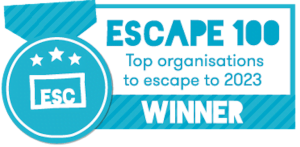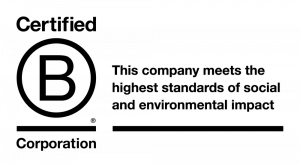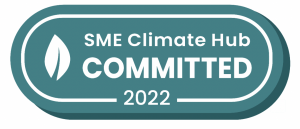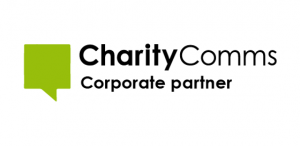#YouBelong was a chance for YouTube creators, non-profits, digital agencies and media to come together and plan how to use YouTube for good.
Taking place at Google HQ in London, the event started with a screening of “Waiting at the Door – A Glimpse into the lives of Syrian Refugees” a short 20 minute documentary filmed by Syrian-American brother and sister, Akram and Thawab Shibly, which was released exclusively on YouTube. It was awarded the 2016 SUNYWide film festival Grand Jury Prize.
The screening was followed by a panel with non-profits, creators and digital agencies, who discussed how YouTube creators can partner with non-profits and use their influence for good.
The panelists were:
- Charlie McDonnell, AKA Charlieissocoollike on YouTube
- Suli Breaks, Spoken word artist and YouTube creator
- Joe Wade, CEO of creative agency Don’t Panic
- Jaz Cummins, CEO of Empower, with experience doing digital for Amnesty International and UNHCR
- Tasneem Albarazi, Spokesperson for Syria Relief and aspiring YouTube creator
Here are our notes from the panel and what was a very interesting and insightful discussion.
What inspired you to work with charities and non-profits?
- Suli: As an artist I always wanted to reach and impact people with my words. Just another extension of my work – helping others make an impact and seeing that influence as they make their own impact
- Charlie: As soon as I got an audience on YouTube, I saw it as a responsibility. Firstly, that’s to entertain them, but then it became a priority to help others. Once people started to get in touch with me, then I started collaborating with charities. It felt like a personal thing: What good can I do myself? Then it became what good can we do in collaboration?
- Tasneem: Syria Relief came into being in 2011 while I was at uni studying media. When the crisis started, the charity asked me to go to Za’atri camp to film from there. After uni, I went off for 8 months to work for Al Jazeera, but then I came back to work for Syria Relief as there was no better place to learn. I have a close affinity to the cause as my family is Syrian, so I feel blessed that I can work for an NGO when some people don’t have that opportunity.
- Jaz: I started in media and marketing agencies for commercial brands, because it was difficult to get into the competitive space. But I got a role at Amnesty, which I gee up with as my family supported them, so I’ve been working hard to continue working for charities. To work in an area where you’re using your skills for good is really valuable.
- Joe: We started as a YouTube channel, but the financial criss in 2008 and the MPs expenses scandal inspired us to make activists stunts and videos. These were issues we felt passion about, so we started making more and learning how to spread those videos without a large media budget. We try and get mainstream PR and getting into newspapers, which is still important for us.
How is working for a non-profit different to working for a brand? Are they annoying or wonderful?
- Charlie: There are a lot of similarities. They want to get a message out, whatever that is, so they have similar processes in place to make sure that I’m saying the right thing. I don’t charge a fee for working for charities, which is the main difference, so it doesn’t feel like I’m taking away my soul when working for a non-profit. With charities, I try and make a more innovative video than I would be able to with a brand, such as what can they give me access to that I otherwise couldn’t.
- Jaz: Charities can offer you access and bring you into contact with very interesting people who have experience or expertise in that area. What they probably can’t do is pay you or be as free with what you film, as they have strong responsibilities to protect the people they’re giving you access to. They’re duty of care that they bring you into contact with is a burden for charities, so working out those processes beforehand makes the project much easier.
- Suli: Making sure that you’re well informed and make sure that you’re the ideal person to promote what they’re trying to get across. Some of the most productive things I’ve done is where I’ve been able to talk to their team and find out about their cause. For example, they’re looking to work with change makers in the community, so speaking to the founder of the charity helped me understand what their cause was trying to achieve. With a brand, you speak to the agent and they just tell you what to do.
- Tasneem: Working with non-profits, you’re never really going to find anyone who’s not interested in what they’re trying to do. A lot of the media I produce is around what’s happening in Syria, so if the subject wasn’t so sensitive then I would be able to be more creative. Sometimes it hinders your creative, so you have to think a lot more for every second of footage that you film. I find I’m constantly thinking way too much about what I’m doing.
- Joe: It’s similar for celebrities, who don’t want to face backlash for supporting a cause. It’s about authenticity and transparency and developing a long term audience.
How can charities and non-profits approach YouTube creators?
- Suli: The biggest issue is filtering who is a true non-profit. Everyone is a non-profit when you’re asking free something for free. Unless you’re specific about the non-profit, then there’s a charity for every cause and you need to reach out to them to help.
- Jaz: Charities aren’t sure how to approach creators, as it’s anew world and etiquette. They’re not sure if they need to pay or if a creator is interested in their cause, then it’s still worth asking. Email them, tweet them, email the press team and you may find that they jump at it.
- Charlie: The first experience I had of working with a charity was with the Alzheimers Society, which was part of Project For Awesome – asking people to talk about their favourites charities. People want to know you genuinely care, so if you’ve gone out of your way to make a video about their cause, then they know you’re ok to approach.
Has a project ever gone really wrong?
- Joe: You can start with a really good idea, but that gets diluted as more and more stakeholders get involved. A lot of people at the top of organisations are quite traditional, so it’s good to be aware of that so you can manage that. You might end up with a mediocre film or something that’s trying to pack too much in. It’s meant to be engaging as possible, then you can make one main film and then follow up with more specific videos. Now, we’re more sure of ourselves and aren’t afraid to say no.
- Suli: Working with non-profits without budgets can create an issue. For example, you get to a venue and it’s not the standard you want or the production team isn’t up to scratch. When a charity doesn’t have budget, it can be better to be really specific up front with exactly what the setup is so there are no surprises.
- Charlie: The first time I worked with a larger charity I was invited to pick a celebrity to work with. I picked a musician, who came over to my flat and we wrote a song together. When we got the one good take of the song, I realised I hadn’t turned on the microphone and we lost the song. Instead I made a whole video about what went wrong, which was probably better than the video we tried to make in the first place.
- Jaz: It’s better to develop long-term relationships. I have seen relationships fall apart because there weren’t the right conversations at the beginning. The first video might be a longer process, but if you can get that done and move on to more interesting projects then that’s great.
Take a look at the #YouBelong hashtag on Twitter for more from the event and take a look at the YouTube For Good platform to find more examples of how you can use YouTube for good.




